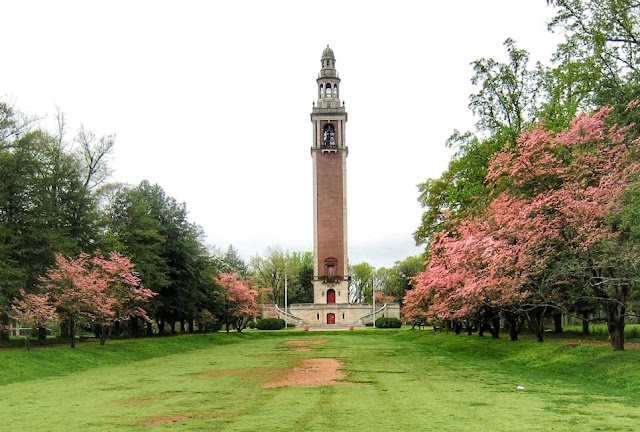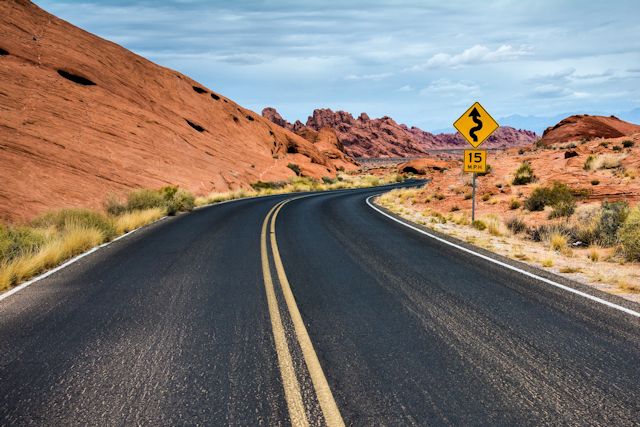Re-Creation and Recreation
Thrilled that cousin Pam was able to play with us today, we turned the tables on her when she asked what we wanted to see. Since she lives in the DC area, Pam frequently serves as the congenial local tour guide to family and friends who visit the nation's capitol. All too often, she probably sees the same sights over and over and cheerfully goes back when the next visitor wants to make the pilgrimage. Since our two-week stay will provide ample opportunity to see the popular spots, we asked Pam where she would like to go.
As an area we had regretted missing on our Fredericksburg visit, Pam's choice of Chancellorsville was perfect. We were surprised to learn today that Chancellorsville was not actually a town but a large brick house in the wilderness that served as a crossroads country inn and home. Amassing his forces at the site before Confederates confronted them, Union General Hooker claimed the inn as his headquarters and hospital. As the battle raged around them, owner Sue Chancellor and her six children took refuge in the basement of their home for four days until artillery shells set the house on fire and forced evacuation. Union troops rescued the Chancellor family but numerous wounded soldiers died in the fire.
Occurring in the third year of an increasingly bloody war, Chancellorsville was one of the deadliest battles of the Civil War. (Only Gettysburg and Chickamauga produced more casualties). In April, 1863, a Union army of 134,000 assembled around the inn to face Robert E. Lee's dwindling army of 60,000. Against an overwhelming Federal force, the Confederates counted on the audacity and military acumen of the fabled partnership between Lee and Stonewall Jackson. Though their daring strategies achieved Lee's greatest victory, Jackson was wounded by friendly fire in the chaos. Eight days later, when the general died of complications from pneumonia, Lee compared the loss to "losing my right arm," a portent proved accurate as Lee never again experienced military success at the same level.
 |
| Stonewall Jackson Shrine |
A poignant exhibit at the National Park Service's Chancellorsville Battlefield Visitors Center relates a personal story to illustrate how battle casualties shattered the lives of average families. Married in 1859, Pennsylvanians John and Almira Patterson settled near Pittsburgh, where they had three children in the ensuing four years. An engineer by training, Patterson was a dutiful patriot who followed in the footsteps of ancestral Revolutionary War veterans and enlisted to fight for the preservation of the Union.
Wounded in combat in 1862, Patterson survived numerous other battles until Chancellorsville, where he was killed when a bullet struck his head. At home in Pennsylvania, Almira received news of his fate. With no job skills to support herself and her children, the widow was soon forced to sell the family home and move into a single room where she raised her fatherless children on a widow's pension.
The Pattersons' story is movingly told through photographs, excerpts from letters, and personal memorabilia, including a valentine sent to Patterson by his children and the rare wooden headboard that marked his temporary wartime burial place. This is the type of personal exhibit missing at Richmond's Museum of the Confederacy, where an overzealous effort to control bias has produced a sterile presentation of a heart-wrenching era.
After absorbing all that history, we returned to the excellent Foode in Fredericksburg for lunch before heading out on a trail for some letterboxing. Though Pam bemoaned her lack of ability to follow the clues to a letterbox, we found her protestations just a bit disingenuous when she located four of the six boxes we found.
 |
| Pam locates yet another box |
QUOTE OF THE DAY:
"I found it!"
Pam, upon finding her first letterbox (and second, and third, etc.)
DAILY STATS:
- Miles driven: 180
- Weather: 48° to 64°, clear to partly cloudy
- States today: 1 (VA)
- Letterboxes found: 6
- Letterboxes found by Pam: 4
- Cannons in battlefield park: 27
- Interpretive signs read: 166
- Wild onions growing in fields: 152,367
 |
| Peeking in (at Stonewall Jackson Shrine) |




















































